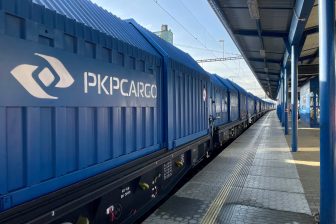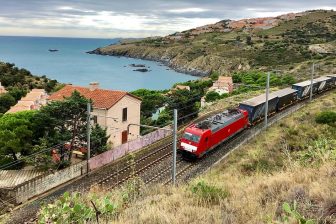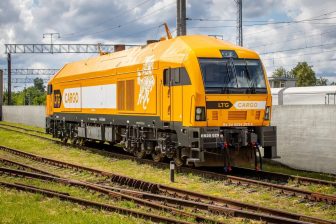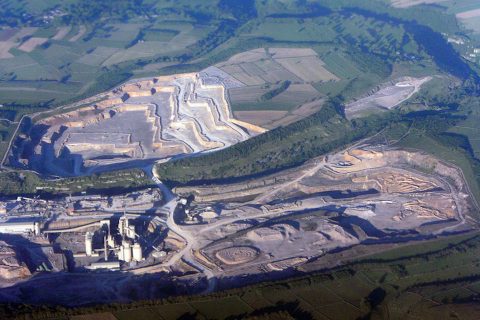
HS2 and the rail freight part in moving construction materials
HS2 Limited, the company formed specifically to build the London-Birmingham railway, has made extensive use of rail freight support throughout its construction phase. To date, the operations have moved millions of tonnes of materials, to and from construction sites all along the first phase of the operations, the building of the core section between the two cities. The vast operation answers the stated aim of HS2 plan to cut carbon emissions by removing road movements as much as possible from the British roads.
The building of HS2 has been a significant contributor to the boom in the UK construction industry. What has often been described as Europe’s biggest single civil engineering project, has relied to a large extent on materials sourced in the north of England. A large part of the volume of material has been delivered by rail from the quarries around Manchester and Derbyshire. The extensive operations have required the collaboration of infrastructure agency Network Rail, aggregate suppliers, and the four rail freight operating companies serving HS2 sites along the 120 miles (190 km) of the route.
New life for old Great Central Railway
The extent of the construction industry in the UK has been a welcome boost for bulk rail freight operations. The addition of the HS2 workload has seen traffic rise significantly in recent years, with the quarterly figures from the Office of Rail and Road, due later this month, expected to reflect a continuation of that trend. For HS2, a large proportion of the materials supply comes from the rail-served quarry sites in the Peak District of Derbyshire. The area was once served by a n express passenger line, but now the remnants of that handle the rather slower and heavier loads from places like Dove Holes and Tunstead, just two of the extensive quarry sites in the area.
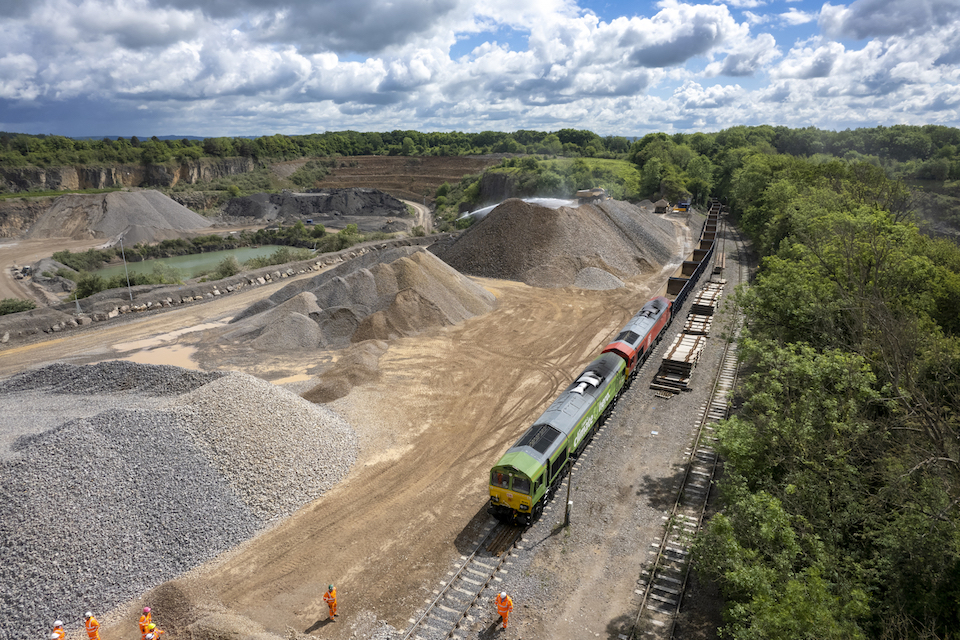
The quarries all lie close to the former Great Central Railway (although even closer to its commercial nemesis, the former Midland Railway). Fittingly, until the 1960s, the line provided a service between London and Manchester. The line was famously the home of the “Blue Pullmans”, a fixed formation passenger train with ‘top and tail’ power cars – a precursor of the express diesel trains of the 1970s. No “Blue Pullmans” remain in service, but there are hopes that, one day, modern high speed formations will echo their prestige service – even if those hopes have been put on hold by the recent government announcement of a delay on completing the northern parts of the HS2 project.
Tunnel spoil doesn’t spoil the view
It’s not just trainloads of aggregates inward. The extensive tunnelling work on the project has required huge quantities of spoil to be removed. that has sometimes required more than just trains to keep the roads clear. In west London, for example, a conveyor network has been installed to remove spoil from the construction site. The Old Oak Common station, which will occupy the site, will be the interim terminus for HS2. Further tunnelling will be required for the remaining five miles (eight kilometres) into a redeveloped Euston station in central London – the eventual terminus fo the line.
The target for 2030, set by HS2, requires the project to take up to 1.5 million lorries off the roads, with up to 15,000 freight trains planned to haul ten million tonnes of aggregate to and from sites. It is now expected that HS2 will move twice that volume of aggregates and spoil across the entire programme, removing three million lorries from the British national road network on 30,000 freight trains. The biggest generators of materials, both inward and outward, are the 32 miles (51 km) of twin-bore tunnels. Despite the government announcement that the project would be slowed down, HS2 is still confident that, when completed, the new railway will free up space for more freight services across the country and additional local and regional passenger trains.

